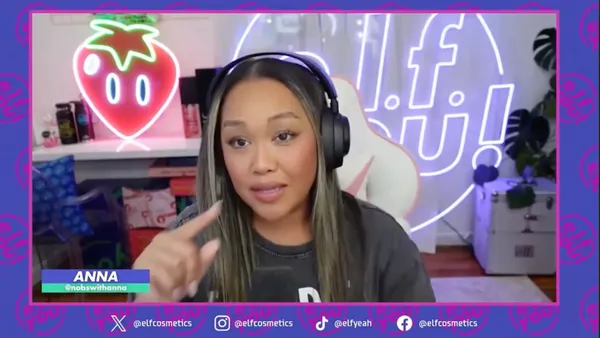No one likes ads, not even marketers. Even today, when ads are more often native than not, and they seemingly blend into the content we’re watching or reading, we have a natural aversion to them. Unless they’re offering something we want. When an ad or a promotional message has something we’re looking for, we barely notice that it’s an ad.
This is where relevant messaging comes in. Whether you’re sending an ad, an email, SMS, or any other kind of message to a customer, the more relevant the message, the better it will be received.
Offering your customers a relevant message, on a relevant channel, at the time when they’re interested creates a level of personalization that crafts a better overall customer experience that your customers will appreciate, and come back for again and again. Here are a few examples of how you can use relevant, personalized messaging to increase customer loyalty and keep those customers longer.
The science behind relevant messaging
Relevant marketing comes down to one key thing: targeting. You can’t send the exact same cookie-cutter message to each one of your very different customers and expect that message to have the same reception with all of them.
Your customers are unique, different people. They have different levels of income, live in different places, and are at different stages of their customer journeys. Sending one message in a “spray and pray” tactic is simply not going to work.
According to the Omnichannel Marketing Automation Statistics Report by Omnisend, targeted campaigns blow non-targeted campaigns out of the water when it comes to ROI. Segmented campaigns offered a 34.7% higher open rate than non-segmented campaigns. By targeting their campaigns, marketers were seeing much more engagement even at the most superficial level.
But that’s not all: segmented campaigns also earned savvy marketers 26.5% more orders on average. When you add in more channels into your marketing mix, each updating with relevant messages to your customers as they move through their customer journey, there is a direct impact on customer retention.
According to the data, marketers using personalized messaging across three or more channels experienced a 90% higher customer retention rate than those using only one channel. This is because customers are looking for this level of personalization, and they’re willing to reward the brands that provide it.
So how can you make sure you’re sending the right message to the right customer at the right time?
How to engage customers with relevant messaging
In order to target your customers for relevant messaging, it’s important to segment them. With any customer database, you’ll need to divide them into smaller groups.
There are a few different tiers you can use to segment your customers:
- Profile data
- Campaign engagement
- Shopping behavior
Segmenting based on profile data is the first and most superficial layer of targeting. With that said, it’s still important.
From there, you can layer up your segmentation by focusing on the behavior of your customers. How do they engage with your campaigns? Have they purchased recently? Are they displaying behaviors that show an intent to purchase? When you segment using behavior, you can target your messages to get the timing right in your customer’s purchase journey.
Practical examples of relevant messaging and targeting
While we’ve gone over the basics of segmenting and targeting, how can we make sure that our message is really relevant?
Get into your customer’s head and think about what they need. These Omnisend marketers managed to do exactly that. By using Omnisend’s powerful automation and personalization, they were able to find success in relevant messaging.
The Cake Store
For example, when was the last time you bought a cake? Likely for a special occasion, right?
Considering that most people purchase cakes for birthdays and anniversaries, The Cake Store set up a simple automated message that would send an email out to a customer that purchased a cake 340 days ago. This single automation earned them an additional $37,000 in revenue.
Why? Because chances are if they needed a cake around this time last year, they might need a cake this year too. Combined with a 10% discount offered by The Cake Store? This ultra-relevant message was a clear winner. An automated anniversary or birthday message with a special offer can be just what your customer needs to be brought back into the fold.
Dixxon Flannel Co.
Dixxon Flannel Co. used relevant messaging in their automation campaigns to earn $65,000 in just 60 days, the bulk of which came from abandoned cart automation.
When a customer abandons their cart, a common occurrence in the e-commerce world, it can be for any number of reasons. By sending a timely message to your customer when they’ve shown the highest intent to purchase, you can bring them back to seal the conversion. Dixxon found success in cart recovery automation, earning $36,000 in potentially lost revenue.
However, Dixxon didn’t stop there. They immediately started using welcome, and order follow-up campaigns which brought in an extra $29,633.
Dixxon managed to build up an expectation from their customers, and began using automation for exclusive product launches. They send a teaser email 12 hours before the product launch, then an hour before, and then at launch. This strategy generates between $10,000-$20,000 per each product launch, which happens between 2 and 3 times per month.
By sending their customers teasers with relevant messaging, they’ve built a relationship where the customer feels a sense of urgency because they might miss out on a great new product. It would be hard to imagine a customer leaving an email from Dixxon unopened.
Today, customers are more demanding than ever before. Personalization has to go further than simply having a customer’s first name in your message. That wowed a customer 10 years ago, but in today’s e-commerce market, it’s going to take a lot more to get that wow factor. By making sure that your messages are always relevant and personalized, your customer will hold your brand in higher esteem. It won’t feel like you're selling to them, but rather offering them an opportunity to get what they want.
And when you give the customers what they want, they’ll repay you for it.









